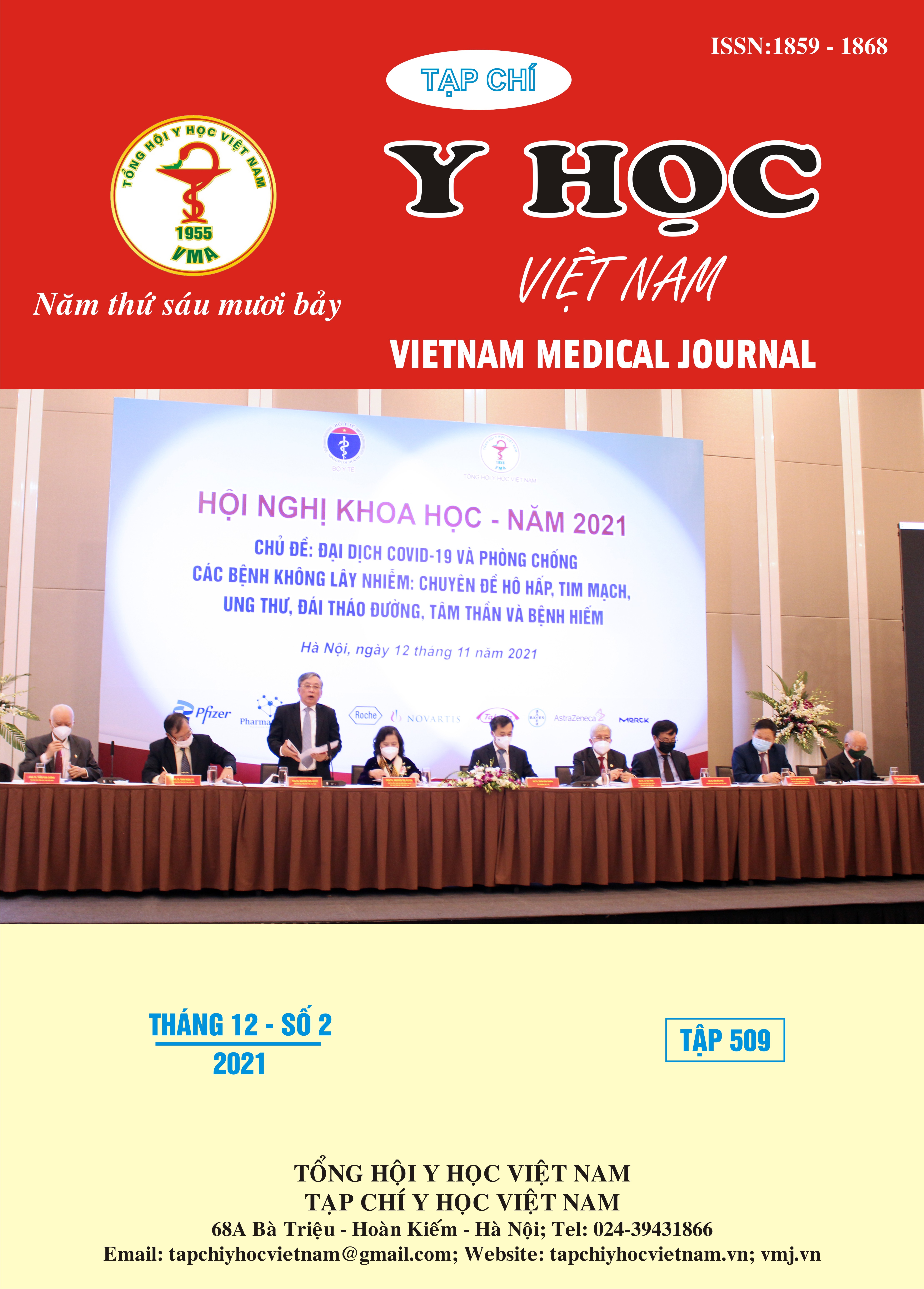ASSESSMENT OF HEPATOPULMONARY SHUNTING IN HEPATOCELLULAR CARCINOMA PATIENTS BEFORE SELECTIVE INTERNAL RADIATIONTHERAPY WITH Y-90
Main Article Content
Abstract
Objectives: To evaluate some factors related to the value of hepatopulmonary shunting when imaging with 99mTc-MAA in patients with hepatocellular carcinoma (HCC) before selective internal radiation therapy with 90Y. Methods: The study was conducted on 44 patients diagnosed with HCC and treated at the Nuclear Medicine & Oncology Center, Bach Mai Hospital from 2019 to 2021. The patients were recorded by SPECT machine with 99mTc-macroaggregted albumin (MAA) prior to Selective Internal Radiation Therapy (SIRT) with 90Y radioactive microspheres. Hepatopulmonary shunting values were calculated and assessed in relation to a number of clinical and subclinical factors. In addition, follow-up patients over time to check whether there is a correlation between hepatopulmonary shunting values and response to SIRT treatment. Results: The average value of hepatopulmonary shunting was 5.3±3.7%, the smallest 1.2%, the maximum 19% (then no SIRT treatment). When recording with the SPECT machine, there were 03 patients with a concentration of 99mTc-MAA outside the liver (position of the gallbladder and stomach). The survey showed that there could be a statistically significant relationship between the patient's gender characteristics, the degree of cirrhosis, the tumor size, the degree of tumor angiogenesis and the value of the hepatopulmonary shunting. It was initially found that the hepatopulmonary shunting value was not a prognostic factor in the response to SIRT in patients with HCC, but it was found that the shunt value was statistically significantly associated with the risk of metastasis lung of malignant liver tumor. Conclusion: Screening with 99mTc-MAA to calculate hepatopulmonary shunting before SIRT is necessary because it helps to reduce the risk of radiotherapy-related complications, and enhances the safety and effectiveness of treatment. The promising value of hepatopulmonary shunting also provides useful information not only for SIRT but also for patients with other treatment options.
Article Details
References
2. Dainel TM (2018). Spectrum of findings in 99mTc-MAA SPECT/CT and their significance in treatment planning for Yttrium 90-microsphere radioembolization for hepatocellular carcinoma. Nucl Med Biomed Imaging, Volume 3(1): 1-4.
3. Lewandowski RJ, Kulik LM, et al (2009). A Comparative Analysis of Transarterial Downstaging for Hepatocellular Carcinoma: Chemoembolization Versus Radioembolization. American Journal of Transplantation, Vol. 9: 1920-1928.
4. Joseph RK, Ahmed G, Ryan H, et al (2017). Indicators of Lung Shunt Fraction Determined by Technetium-99 m Macroaggregated Albumin in Patients with Hepatocellular Carcinoma. CardioVascular and Interventional Radiology, Vol. 40: 1213-1222.
5. Ron CG, Sean PZ, et al (2014). Characteristics of primary and secondary hepatic malignancies associated with hepatopulmonary shunting. Radiology, Vol. 271(2):602-612.
6. Rania R, Mohammed SH (2014). The relationship between the percentage of lung shunting on Tc-99m macroaggregated albumin (Tc-99m MAA) scan and the grade of hepatocellular carcinoma vascularity. The Egyptian Journal of Radiology and Nuclear Medicine, Vol. 45: 333-342.
7. Tyler S, Daneil D, et al (2016). Elevated Lung Shunt Fraction as a Prognostic Indicator for Disease Progression and Metastasis in Hepatocellular Carcinoma. J Vasc Interv Radiol, Vol. 27(6):804-11.
8. Minzhi X, Steven L, et al (2016). 90Y Radioembolization Lung Shunt Fraction in Primary and Metastatic Liver Cancer as a Biomarker for Survival. Clin Nucl Med, Vol. 41(1):21-7.


